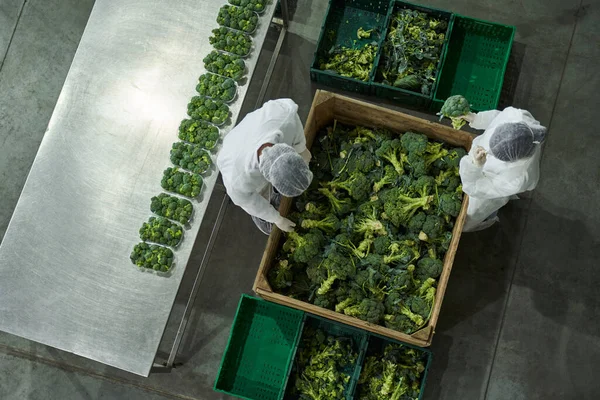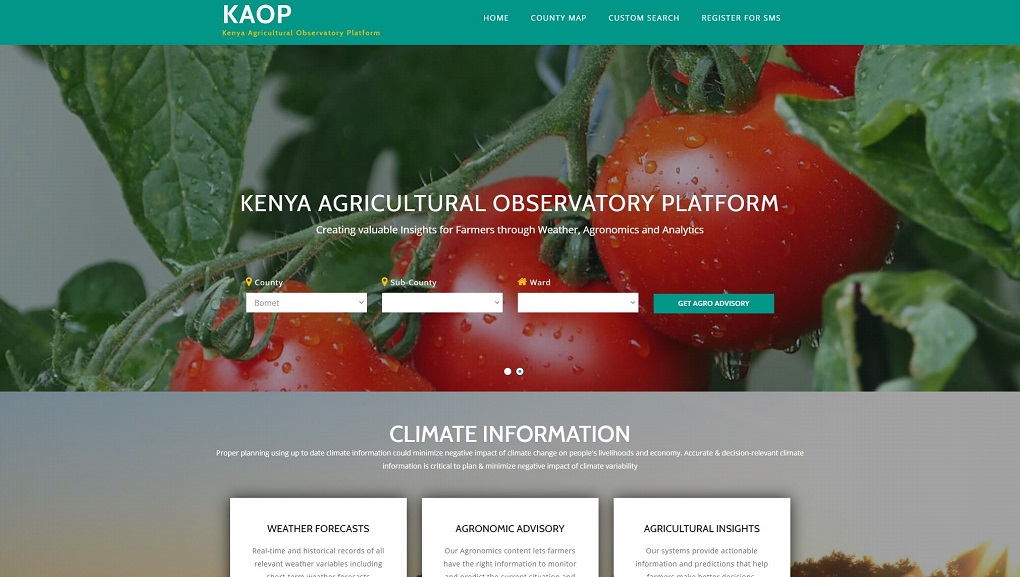Kenya is one of the leading agricultural producers in Africa, with an abundance of crops ranging from tea, coffee, horticulture, and floriculture to fresh produce. As a result, there are ample opportunities for entrepreneurs looking to venture into agro-export business. However, exporting agricultural products requires more than just farming knowledge; you need to be familiar with regulations, certifications, and the documentation required to successfully navigate the export process.
If you’re interested in running a successful agro-exporter business in Kenya, here’s a comprehensive step-by-step guide on how to start your journey and the essential documents you’ll need along the way.
1. What are the main exports in Kenya?
Before starting an agro-export business, have a clear understanding of the international market for your products. Make sure to research the global trends and demands to identify which products have strong export potential and the best markets to sell.
In 2020, export earnings for horticulture were KES 151 billion, with cut flowers earning KES 108 billion, fruits KES 18 billion, and vegetables KES 24 billion below are key products you can consider
- Fresh fruits (e.g., mangoes, avocados, carrots)
- Vegetables
- Cut flowers and foliage
- Tea and coffee
- Spices and herbs
- Livestock and livestock products.
Study market dynamics, competition, consumer preferences, and potential trade barriers in your target countries. This will guide you in selecting the right products and ensuring there’s enough demand for them.
2. Which is the Best Agro-Export Business Model?
There are two exporting business models in Kenya; the grower and consolidator model.
As a grower or Producer you are directly involved in the cultivation and production of agricultural products intended for export. On the hand, as a consolidator, or a broker, you act as an intermediary or an outgrower purchasing livestock and crop products from farmers or producers and facilitating their export to international markets.
Below is a comparison of each model’s pros and cons.
| Grower Model | Consolidator Model | |
|---|---|---|
| Pros | Greater control over product quality, the ability to implement sustainable practices, and potentially higher profit margins | Lower capital investment compared to the grower model, flexibility in dealing with various products, and the ability to scale operations quickly. |
| Cons | Requires substantial investment in land, infrastructure, and ongoing operational costs. Additionally, it involves managing risks related to crop failure, pests, and market fluctuations. | Dependence on suppliers for product quality and consistency, potential lower profit margins due to intermediary status, and the need to establish robust supply chain relationships. |
2. Select Your Niche Product
Selecting a niche product is crucial for building a focused business strategy. Specializing in a specific product or product category allows you to develop expertise and establish a strong brand presence Consider various factors such as demand, feasibility and profitability of each product.
- Market demand: Is there a growing trend for your chosen product?
- Production feasibility: Can you source or grow this product sustainably and cost-effectively?
3. Build Supplier and Production Networks
Once you have identified the products you want to export, establish a reliable and sustainable supply chain. This involves finding local farmers or cooperatives that can provide the necessary quality and quantity of produce. Be sure to build long-term relationships with your suppliers, ensuring they adhere to quality standards and sustainable farming practices.
Additionally, consider partnering with local agricultural institutions for better training on farming techniques, pest control, and post-harvest handling.
4. Get the Necessary Agro-export Business Certifications & Licenses
To export agricultural products, you must meet local and international quality standards and certifications. In Kenya, agro-exporting requires the proper registration of your business. Check with relevant authorities to see what specific certifications your target market requires.
Below are some of the key certifications required for agro-export:
- KEBS Certification: The Kenya Bureau of Standards (KEBS) provides certification to ensure your products meet national and international standards.
- Global GAP Certification: This certification is crucial for farmers who want to export fresh produce to Europe and other international markets. It ensures your produce is grown, packed, and handled according to global standards.
- Phytosanitary Certificate: Issued by the Kenya Plant Health Inspectorate Service (KEPHIS), this certificate verifies that your agricultural products are free from pests and diseases.
- ISO Certification: Depending on your target market, obtaining an ISO certification for quality management or food safety may be necessary.
- Kenya Revenue Authority (KRA): Obtain a KRA PIN to legally operate and remit taxes.
- Exporters Registration at the Kenya Trade Network Agency (Kentrade): This is essential for the export of goods from Kenya and will allow you to use the National Electronic Single Window System for exporting.
- Business Name Registration: Register your agro-export business with the Registrar of Companies at the Attorney General’s office.
- Export License: Apply for an export license from the Horticultural Crops Development Authority (HCDA)
6. Understand the Export Process and Documentation
Once your business is registered, and you have all necessary certifications in place, you need to familiarize yourself with the export process and ensure you have the right documents ready. Some key documents include:
- Commercial Invoice: This is an official bill for the goods sold and is used by customs for tariff and taxation purposes.
- Packing List: This document provides a detailed inventory of the goods in the shipment, including packaging information.
- Bill of Lading/ Airway Bill: Issued by the shipping company, this document serves as a receipt for the goods and as proof of shipment.
- Certificate of Origin: A document that confirms the origin of the products and may be required by the importing country.
- Insurance Certificate: Ensures that your goods are covered in case of loss or damage during transit.
7. Arrange Logistics and Shipping
You’ll need a reliable logistics partner who can help you with packaging, transportation, and international shipping. Kenya has access to major seaports, like the Port of Mombasa, and airports like Jomo Kenyatta International Airport (JKIA), which are ideal for international shipping of goods.
Ensure your products are packed according to international standards to avoid damage during transportation and maintain product quality. Also, stay informed about the shipping regulations and tariffs for your specific products.
8. Market Your Products Internationally
Once everything is in place, it’s time to market your agro products internationally. Attend trade fairs, agricultural exhibitions, and networking events to meet potential buyers, suppliers, and distributors. Building strong relationships with international importers or setting up local agents in your target markets can help grow your brand globally.
You can also partner with international export platforms, or work with freight forwarders who can help facilitate connections with buyers in your chosen market.
9. Comply with Customs and Export Regulations
Finally, it’s essential to ensure that your business complies with all customs and export regulations. Familiarize yourself with customs documentation and clearance processes to avoid delays. You can enlist the help of a clearing and forwarding agent to guide you through the process.
10. Is An Agro-Export Business in Kenya Profitable?
To set up one hectare of a rose farm (inclusive of irrigation, plants, polythene, greenhouse structures, cold storage, and land preparation) will cost KES 25 million to KES 35 million. On the other hand the initial capital expenditure for a medium sized herbs farming like Basil will cost around KES 13 million according to the breakdown below.
| Item | Estimated Cost (KES) |
| Construct 10 Smart Greenhouses of 8m x 30m each | 8,914,000 |
| Establish 1 acre Outdoor Drip Irrigation System | 230,500 |
| Set up a 1 unit Cold Room Reefer | 2,135,000 |
| Infrastructure (Grading and Packing Rooms, Fertilizer and Chemical Stores, Toilets and Bathrooms, Farm Office) | 967,000 |
| GlobalGAP Certification and Export License Registration | 750,000 |
| Total Estimated Cost | 12,996,500 |
Note: These figures are estimates and may vary based on specific requirements, market conditions, and supplier pricing.
The typical operating costs for such a farm co go up to KES 8,340,000 annually. This includes farm inputs, seedlings, salaries and wages, packaging materials, and logistical costs from the farm to Jomo Kenyatta International Airport (JKIA) for export. If your farm manages an income of around KES 1.3 million per month, you can break even at 1.3 years.
Starting an Agro-export business in Kenya as a consolidator may require less capital than being a grower but still involves significant operational considerations and costs. Initial setup costs might range from KES 10,000 to KES 100,000 depending on the scale of your operations and specific requirements for licensing and compliance. Ongoing operational costs will vary based on your business model and market dynamics but should be carefully planned to ensure profitability.
Conclusion
Becoming an agro exporter in Kenya is an exciting venture with immense potential. However, it requires knowledge, planning, and careful attention to detail. By understanding the export market, obtaining the necessary certifications, building a reliable supply chain, and ensuring proper documentation, you can successfully tap into the lucrative world of agro-exporting and create a sustainable business that thrives on quality and integrity.
Starting an agro-export business may seem challenging, but with the right information and resources, you can position yourself as a competitive player in the international trade arena.



